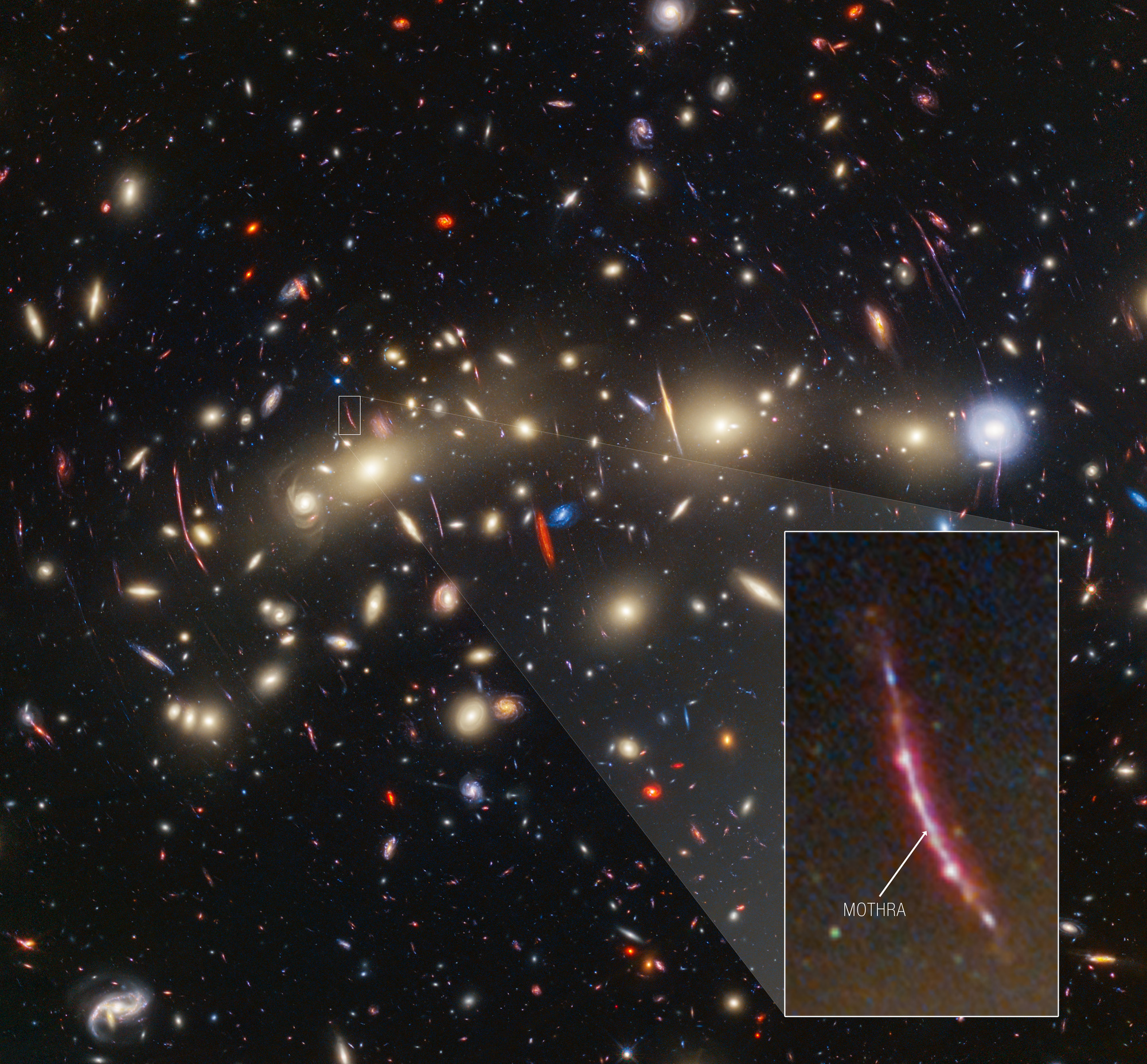Astronomers have combined the observations of the two biggest telescopes in space to create what they are calling the “most colorful image of the universe”. By using JWST to observe one of Hubble’s famous “Frontier Fields” deep views of the universe, they’ve created a panchromatic image ranging from blue visible light all the way to the mid-infrared, which is converted to red visible colors so we can see it.
The picture’s subject is MACS0416, a pair of colliding galaxy clusters located 4.3 billion light-years from Earth. They will eventually combine into a single massive cluster but their respective mass is already large enough to warp space-time, forming a gravitational lens that magnifies the light of distant galaxies and stars in the background – which is why it was chosen as part of Hubble’s Frontier Fields program in the first place.
“We are building on Hubble’s legacy by pushing to greater distances and fainter objects,” Rogier Windhorst, principal investigator of the PEARLS program (Prime Extragalactic Areas for Reionization and Lensing Science), who conducted the JWST observation, said in a statement.
As a rule of thumb, the bluer galaxies in the picture are the ones closest to us and the redder are the furthest, but it is possible for some of the reds to be quite close. When a galaxy is dust-rich, its color reddens, giving the wrong impression of distance based on color alone.
But the JWST observations were not just about the colors of these galaxies, the team was interested in transient events that disappear relatively quickly, reporting 14 of them: 12 were stars briefly but massively magnified and the remaining two were supernovae.
“We’re calling MACS0416 the Christmas Tree Galaxy Cluster, both because it’s so colorful and because of these flickering lights we find within it. We can see transients everywhere,” said Haojing Yan of the University of Missouri, lead author of one paper describing the scientific results.
Extremely magnified star Mothra sits among many transient events captured.
Image Credit: NASA, ESA, CSA, STScI, Jose M. Diego (IFCA), Jordan C. J. D’Silva (UWA), Anton M. Koekemoer (STScI), Jake Summers (ASU), Rogier Windhorst (ASU), Haojing Yan (University of Missouri)
Among the stellar transients, one really stands out. Nicknamed Mothra, after the insect Kaiju in the Godzilla “Monsterverse”, this star was magnified by a factor of at least 4,000. What’s weird is that Mothra appears in the Hubble images from nine years ago, suggesting that something peculiar is helping this star get the extra magnification.
“The most likely explanation is a globular star cluster that’s too faint for [JWST] to see directly,” explained Jose Diego of the Instituto de Física de Cantabria in Spain, lead author of the paper detailing Mothra. “But we don’t know the true nature of this additional lens yet.”
The paper led by Yan is accepted for publication in The Astrophysical Journal. The paper led by Diego has been published in Astronomy & Astrophysics.
Source Link: Most Colorful View Of The Universe Reveals Monstrously Magnified Stars
